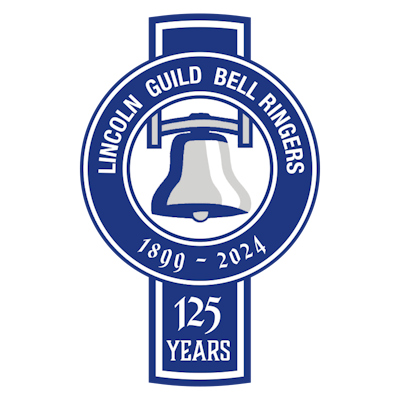Review of Lincolnshire Bells and Bellfounders
This is a welcome update for the first edition and a later reprint which contains much new material. The millennium promoted a surge in new installations plus augmentation and recasting projects many of which carried over into subsequent years. In addition to new entries the previous ones have been scrutinised carefully and installations inspected again in some cases to check or to add additional data and to correct errors which had been notified. It is a comprehensive record of 716 churches, 39 schools and 41 other secular buildings. This new work does not completely supersede the first edition (which has become a collector's item) because some original material plus the sketches by David Vale and many of the illustrations and photographs have been removed to make space for more text and different photographs. Also out is the very long table indicating the number of bells cast in each century and their location.
One inspired addition is the many extracts from the Loft papers, some of which appeared in shortened form in the earlier edition. General J H Loft personally visited many churches in Lincolnshire between 1826 and 1844, noting in some detail the state of the fabric of the building and the bell installation. This, it will be noted, provided a snapshot of conditions before the Victorian urge for 'improvement' and refurbishing took place: essentially the state of play at the end of the 18th and beginning of the 19th centuries. His experiences at some towers could be alarming. Ascending one tower on a long ladder leaning against the wall, he moved a heavy trapdoor to gain access to the next floor only to find the ladder slipping away beneath him. He was able to complete his inspection and then, failing to attract attention by shouting, rang a bell until someone turned up to investigate and replace the ladder. Health and Safety clearly did not rule the day!
Also included is a long section on Great Tom of Lincoln and the protracted negotiations leading to its eventual recasting. Suggestions came in from all over the county and country more or less guaranteeing a perfect repair. Ray Ayres's technical analysis of the bell and suggested repairs is most interesting. One Thomas Bishop offered what seemed like a sensible solution and was invited to attempt a repair. Large pieces broke off soon after starting leaving recasting, entrusted to Thomas Mears of London, as the only option.
The overall appearance of this new edition is of a much lighter, cleaner and more readable text. However, as with the 1st edition, much if the Old English lettering found on the bells has been reproduced in a font which attempts to replicate it, but is not the most readable. That aside, the inscriptions make interesting reading and are a valuable record of historical mores of their time. Well recommended, but supplies are likely to be limited so do not delay if you want one.
Owen Northwood. Dalston
